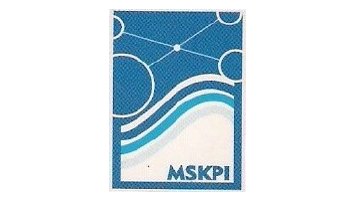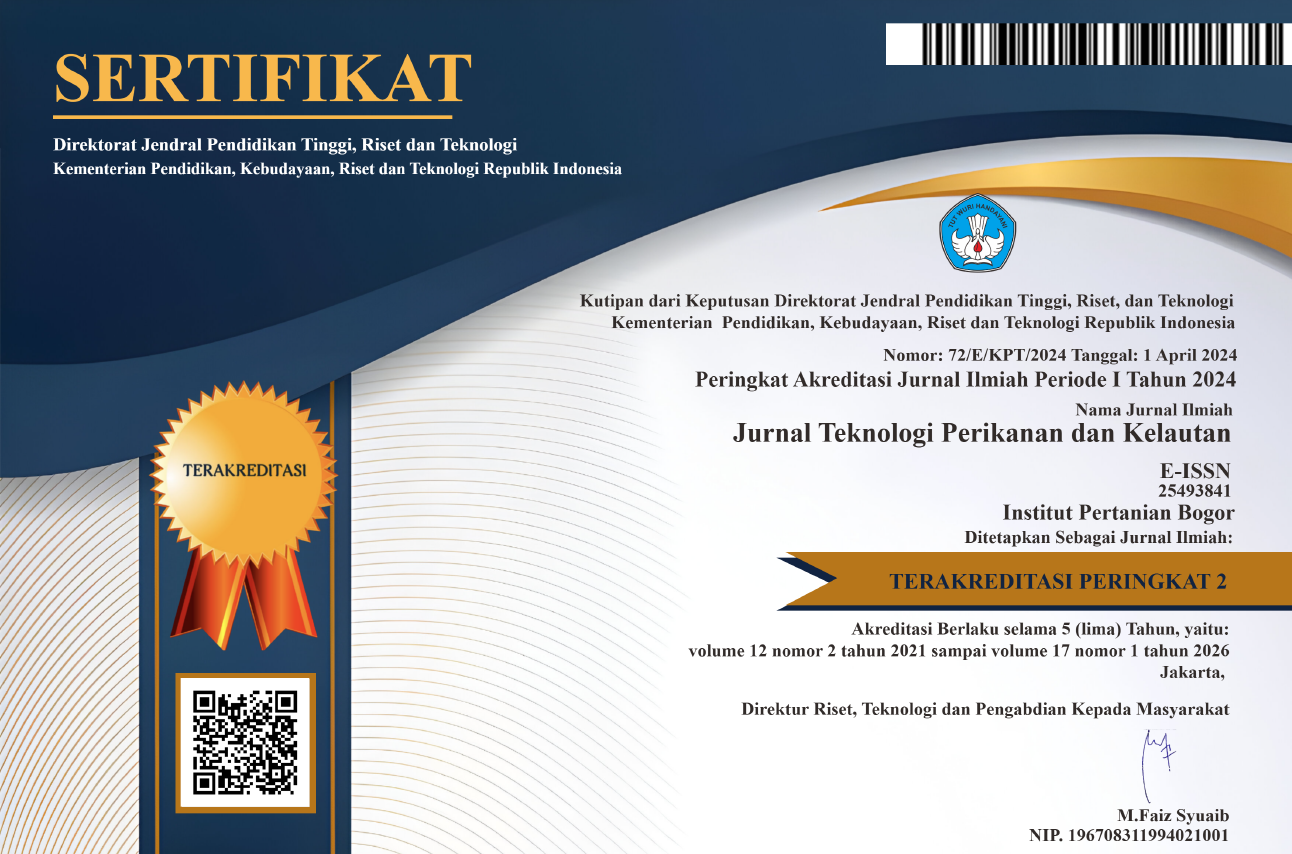KARAKTERISTIK DAYA APUNG DAN DAYA TAHAN PELET DARI LIMBAH BIOFLOK AKUAPONIK
Abstract
Aquaponics combines aquaculture and hydroponic systems in a closed system leading to zero waste. To accelerate the nutrient cycling process, floc system is generally used where the remaining feed is processed by a consortium of microorganisms into biofloc which can be used by fish as additional feed and the rest is circulated to plants as nutrient. However, biofloc production is generally excessive. The remaining biofloc has the potential to be used as a base for biopellets. The aim of the study was to utilize biofloc as a base material for biopellets by using the right adhesive at the appropriate moisture content. Biopellet production was tested using various methods and adhesives. The factorial design was applied to test adhesive type, biofloc/adhesive composition, and moisture content treatments. Biopellet quality was tested through buoyancy and durability. Biofloc was successfully used as a basic material for biopellets production. Tapioca flour and bran were the best adhesives by using a modified grinding machine with a propeller blade to make the cutting process easier. For buoyancy, the composition of biofloc/adhesive of 5:5 at 13% water content showed the highest yield, using either tapioca flour or bran. For durability, the highest value was also obtained by the biofloc/adhesive composition of 5:5, for tapioca flour adhesive at a moisture content of 16%.
Copyright (c) 2022 Jurnal Teknologi Perikanan dan Kelautan

This work is licensed under a Creative Commons Attribution-NonCommercial-ShareAlike 4.0 International License.





















